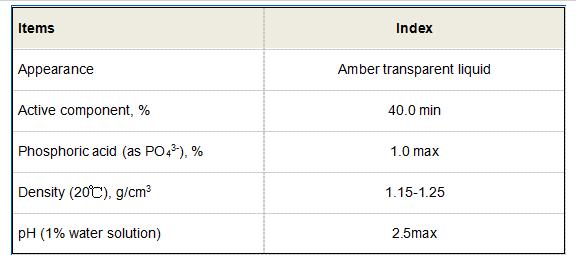hedp in soap
HEDP in Soap An Overview of Applications and Benefits
In the ever-evolving world of personal care products, the integration of various chemical compounds plays a critical role in enhancing their effectiveness and safety. One such compound that has garnered attention is Hydroxyethylidene Diphosphonic Acid (HEDP). Known for its versatility and efficacy, HEDP is increasingly being incorporated into personal care items, including soaps. This article examines the applications, benefits, and safety aspects of HEDP in soap formulations.
What is HEDP?
HEDP is a synthetic phosphonic acid that is typically used as a chelating agent. Its primary function is to bind metal ions, preventing them from interfering with various chemical processes. This property makes HEDP particularly valuable in a multitude of formulations, including household cleaners, detergents, and personal care products like soaps. When incorporated into soap, HEDP serves not only functional purposes but also enhances the overall user experience.
Applications of HEDP in Soap
1. Chelating Agent One of the most significant roles of HEDP in soap is its ability to chelate metal ions. Hard water, which contains high levels of calcium and magnesium, can hinder the effectiveness of soaps and other surfactants. By binding these metal ions, HEDP ensures that soap remains effective, producing a rich lather even in challenging water conditions. This property is particularly beneficial for consumers who live in areas with hard water, making their bathing experience more satisfying.
2. Stabilizing Agent HEDP can also act as a stabilizing agent, helping to maintain the integrity of the soap formulation. By preventing the precipitation of minerals, HEDP contributes to the longevity and consistency of the product. This stability is vital for manufacturers as it extends the shelf life of their products and maintains quality over time.
3. Antimicrobial Properties Recent studies have suggested that HEDP exhibits some antimicrobial properties. While not a primary function, its use in soap can potentially contribute to the overall efficacy of hygiene products. This characteristic is especially important in the context of personal care, where maintaining skin health and cleanliness is paramount.
4. Enhancing Appearance In the realm of aesthetics, HEDP contributes to the transparency and clarity of liquid soap formulations. By preventing cloudiness caused by mineral content, HEDP helps produce visually appealing products that reflect quality and care.
hedp in soap

Benefits of Using HEDP in Soap
1. Improved Performance The primary advantage of incorporating HEDP into soap is undoubtedly improved performance. By alleviating the effects of hard water, users experience a more effective cleaning process, leading to greater consumer satisfaction.
2. Versatile Compatibility HEDP is compatible with a variety of formulations, making it a flexible ingredient for both liquid and solid soaps. Its ability to function in diverse pH levels further underscores its versatility, allowing manufacturers to craft a wide range of products without compromising effectiveness.
3. User Safety Safety is a critical consideration in personal care products. Numerous studies suggest that HEDP is low in toxicity, making it a safer alternative to other phosphates and chemicals that may have detrimental effects on skin or health. Furthermore, the FDA recognizes it as safe for use in cosmetic applications, providing an additional layer of reassurance to both manufacturers and consumers.
Considerations and Regulations
As with any chemical compound in personal care products, the use of HEDP in soap is subject to regulatory scrutiny. Manufacturers must adhere to guidelines set forth by organizations like the FDA and EU cosmetic regulations to ensure safety and efficacy. This oversight helps to mitigate risks and protect consumers from potential adverse effects.
Conclusion
HEDP is making a name for itself as a valuable ingredient in soap formulations, offering enhanced performance, stability, and aesthetic benefits. Its ability to chelate metal ions and contribute to antimicrobial properties makes it an attractive option for manufacturers seeking to improve their products. As consumer demand for high-quality, effective personal care products continues to rise, HEDP’s role in the soap industry is likely to grow, promising a better bathing experience for everyone.
-
Water Treatment with Flocculant Water TreatmentNewsJun.12,2025
-
Polymaleic AnhydrideNewsJun.12,2025
-
Polyaspartic AcidNewsJun.12,2025
-
Enhance Industrial Processes with IsothiazolinonesNewsJun.12,2025
-
Enhance Industrial Processes with PBTCA SolutionsNewsJun.12,2025
-
Dodecyldimethylbenzylammonium Chloride SolutionsNewsJun.12,2025





